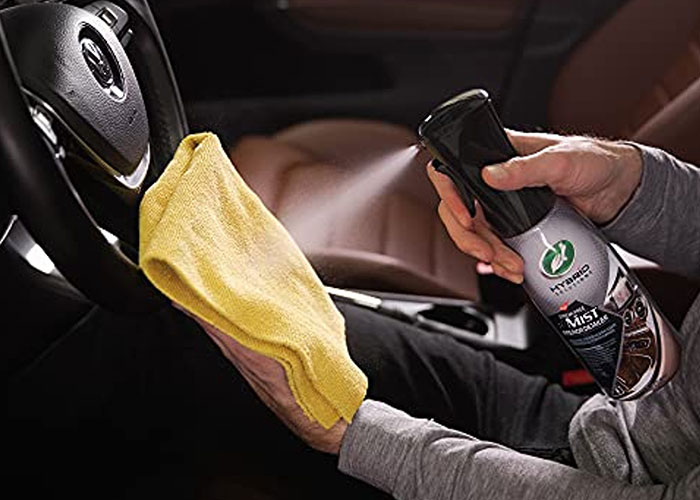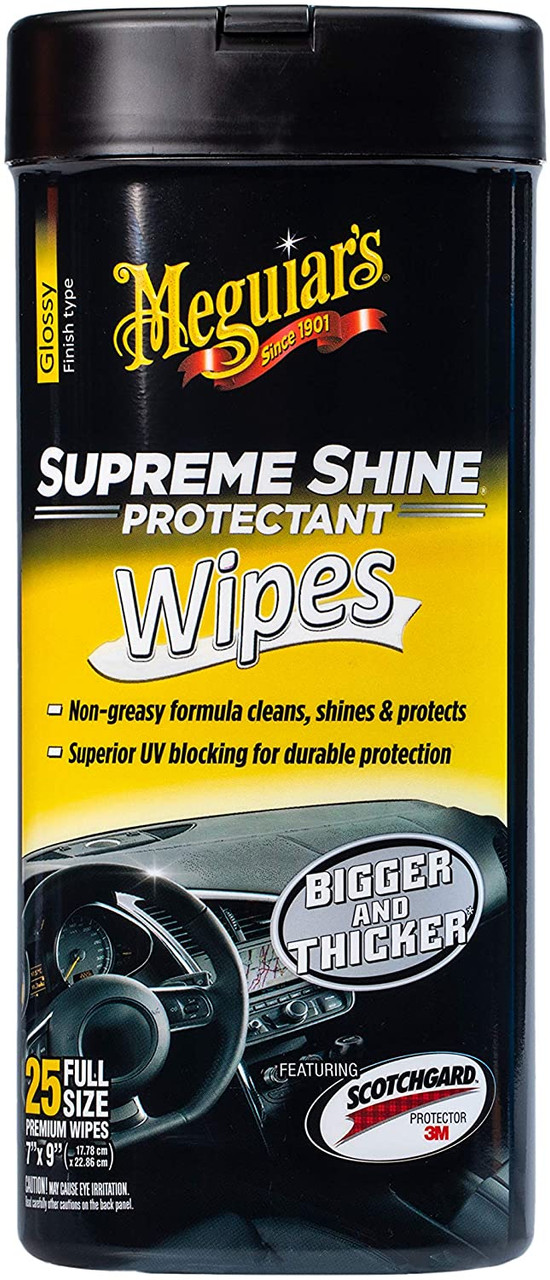8 Tips For Cleaning Steering Wheel
3rd Jun 2024
Cleanliness of your car's steering wheel is pivotal to a greater driving experience. The steering wheel is the part of the vehicle that you interact with the most, making it a prime surface for the accumulation of dirt, oils, and germs.
Proper cleaning steering wheel techniques not only keep your car looking good but also extends its lifespan and maintain hygiene in your vehicle. In this blog post, we'll detail each step required for effectively cleaning steering wheel surfaces, whether they're made of leather, vinyl, or plastic.
Let’s get started!
8 Tips For Cleaning Steering Wheel
1. Understand Your Steering Wheel Material
Before beginning the process of Cleaning Steering Wheel surfaces, it's essential to identify the material of your steering wheel. This will help you to determine the best cleaning methods and products to use while cleaning.
Moreover, understanding your steering wheel material will help you maintain the condition and appearance of the wheel without causing damage. Below we’ve outlined the different types of steering wheel materials:
Leather:
Leather steering wheels offer a luxurious feel and are highly favored in many premium vehicles. They are, however, porous and can absorb oils and sweat from the hands, which may lead to wear and cracking over time.
Vinyl:
Vinyl is less expensive than leather and is valued for its durability and ease of maintenance. Vinyl steering wheels are smoother and have a plastic feel compared to leather. Avoid using harsh chemicals that could strip away protective coatings.
Plastic:
Plastic is the most common steering wheel material, particularly in more budget-friendly car models. It's hardy but can still accumulate germs and grime. Plastic steering wheels are usually very hard with a uniform texture and often lack the warmth or grip of leather or vinyl.
Wood and Metal:
Some steering wheels incorporate wood or metal elements, often found in classic or high-end luxury cars. These materials will require special care — wood may need oils or specific wood cleaners to maintain its sheen and prevent cracking, while metal might need polishing to avoid tarnishing.
2. Choosing the Right Steering Wheel Cleaner
Always choose the appropriate steering wheel cleaner ($16.95) as it will help you prevent damage and keep the steering wheel looking and feeling like new.
For leather steering wheels, opt for cleaners specifically designed for leather, which helps nourish the material while cleaning. Vinyl and plastic wheels can be effectively cleaned using a simple solution of mild soap and water.
Avoid harsh chemicals and abrasive steering wheel cleaners, as these can cause damage to the steering wheel's surface, leading to discoloration and deterioration. Always check the cleaner’s label to ensure it’s safe for use on your specific type of steering wheel material.
3. Go For a Soft Cloth for Application and Wiping
When cleaning the steering wheel, the choice of cloth is as crucial as the cleaner itself. For optimal results, always use a soft, clean microfiber cloth ($9.99). These clothes are ideal for cleaning steering wheels because they don’t scratch the surface or leave any residue behind.
Using a microfiber cloth helps in gently cleaning steering wheel grime without compromising the integrity of the material. This method ensures that your steering wheel remains in excellent condition and maintains its aesthetic appeal and tactile quality. Regular use of the right cloth in your cleaning process will keep your steering wheel looking new and functionally pristine.
4. Avoid Excessive Moisture During Cleaning
When cleaning your steering wheel, it’s important to control the amount of moisture you use. Be cautious not to oversaturate the steering wheel with water or cleaning solutions. Excessive moisture can penetrate small openings, potentially causing internal damage or encouraging mold and mildew growth.
A light application of cleaning solutions is crucial when cleaning steering wheels. This approach ensures that you effectively clean the surface without introducing too much liquid, which could be detrimental. After applying the cleaner, promptly remove any excess moisture with a dry cloth to prevent any potential issues.
5. Apply Protective Treatments to Preserve Material Integrity
To ensure the longevity and aesthetic appeal of your steering wheel, apply a protective treatment after cleaning your steering wheel. For leather steering wheels, it is beneficial to use a high-quality leather conditioner. This product helps keep the leather supple and hydrated, significantly reducing the risk of cracks and wear over time.
For steering wheels made of vinyl or plastic, a UV protectant spray is highly recommended. This type of treatment shields the material from the harsh effects of sunlight, preventing fading and surface wear. These protective measures are crucial in extending the lifespan of your steering wheel and maintaining its pristine condition.
By integrating these protective treatments into your routine for cleaning steering wheels, you not only clean but also enhance the resistance of the steering wheel’s material to everyday stressors.
6. Clean Spots Immediately to Prevent Stains
Spills are inevitable, and immediate action is important. Promptly cleaning the steering wheel following a spill can effectively prevent permanent stains from setting in. Keeping cleaning wipes ($21.99) within easy reach in your car allows for a swift response to any spills or splashes.
This proactive approach helps maintain the steering wheel's pristine condition and appearance. Furthermore, regular spot cleaning as part of your routine for cleaning your steering wheel ensures that no residues build up over time. This practice contributes to maintaining the overall hygiene and aesthetic quality of your steering wheel, making for a more pleasant and clean driving environment.
7. Adapting Cleaning Practices for Seasonal Challenges
Seasonal changes impact how you should maintain your steering wheel. In winter, wearing gloves can prevent de-icing chemicals and salt from damaging the steering wheel's material. This precaution helps preserve the wheel’s integrity during cold conditions.
In summer, regularly cleaning the steering wheel is essential to manage sweat and body oils. Frequent wiping maintains the comfort and appearance of the wheel, preventing grime buildup and ensuring a pleasant driving experience.
By adjusting your cleaning routine according to the season, you keep the steering wheel in optimal condition year-round, enhancing its longevity and usability.
8. Prevent Exposure From Direct Sunlight
Direct sunlight can deteriorate your steering wheel's material. When parking, try to find a shaded spot or use a dashboard sunshade to protect against UV damage. This helps prevent the steering wheel from becoming discolored or brittle.
Reducing sunlight exposure is crucial for maintaining the quality and appearance of your steering wheel. Simple measures like using a sunshade can extend the life of the steering wheel and keep it looking and feeling good.
Implementing these steps into your routine for cleaning your steering wheel will help preserve its condition and functionality over time.
Cleaning Steering Wheel Just Got Easy With JB Tools
JB Tools offers a range of high-quality products that make cleaning your steering wheel a straightforward and efficient process. Whether you're dealing with leather, vinyl, or plastic, JB Tools has the perfect steering wheel cleaners to help you maintain your steering wheel in top condition.
Visit JB Tools today and discover the best tools to keep your steering wheel spotless and well-maintained.




